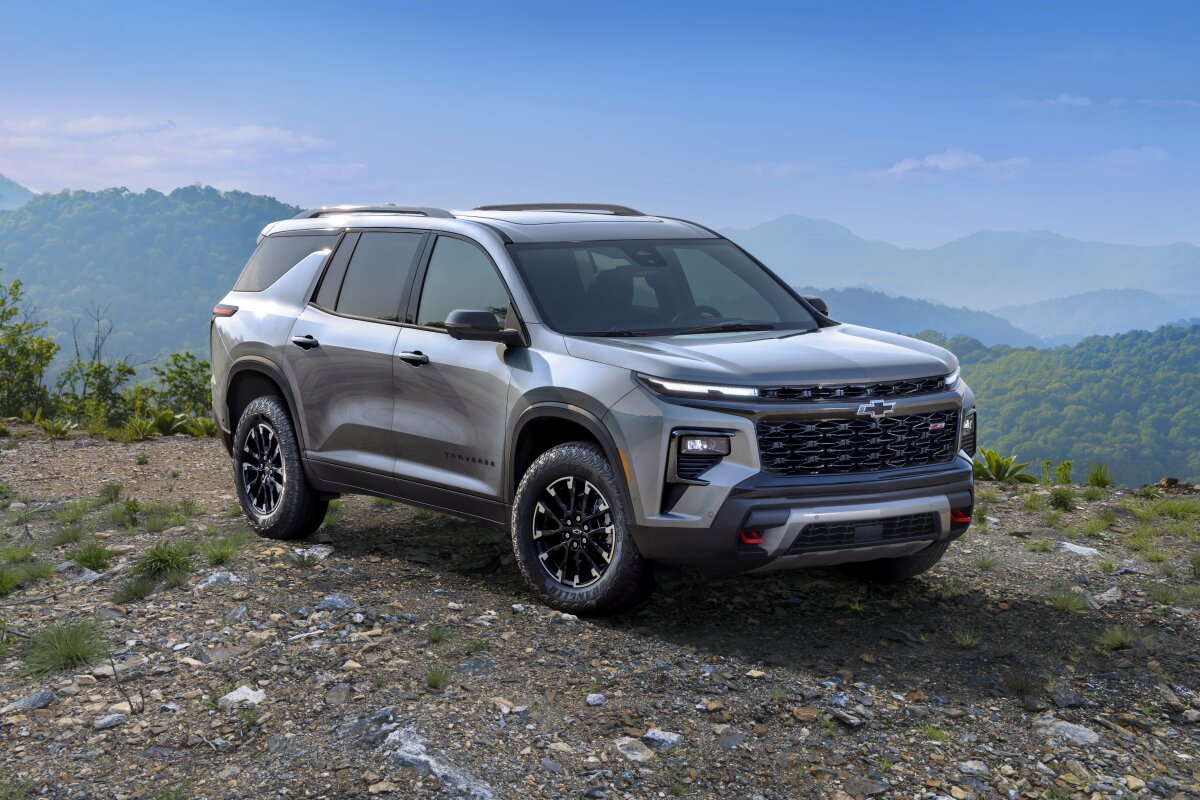In the modern age of automotive design, convenience features like power liftgates have become almost standard, transforming the way we interact with our vehicles.
Whether you’re a busy parent juggling a stroller and bags of groceries, an adventurer loading camping gear, or a professional transporting equipment for work, the power liftgate promises to make the process easier, faster, and more efficient.
This hands-free, automatic feature is a lifesaver in many situations, eliminating the need to manually lift and close the trunk door, especially when your hands are full or you’re in a rush.
But while the idea is undoubtedly appealing, the reality can often fall short, as many drivers have found themselves frustrated by sluggish, slow-opening liftgates that waste precious seconds when they need speed the most.
For many cars and SUVs, the power liftgate is a feature meant to offer ease and convenience, enhancing the vehicle’s functionality. However, not all liftgates are created equal. In some models, despite the intention to provide an automatic and smooth experience, the liftgate takes a painfully long time to open, sometimes lingering for what feels like an eternity.
What may seem like a minor inconvenience in theory can, in practice, become a persistent annoyance, particularly when you’re trying to get in and out of your vehicle quickly.
The last thing you want is to stand there, helpless, waiting for the liftgate to finish its slow ascent while you’re already late for an appointment, trying to escape the rain, or managing a fussy toddler who just wants to get inside the car.
This discrepancy between promise and performance has led many car owners to question the design and engineering choices behind power liftgates in certain vehicles. While the feature is undoubtedly convenient when it works as expected, its sluggishness in certain models detracts from the user experience.
In some cases, this flaw feels completely out of place, especially in vehicles that excel in other areas, such as performance, comfort, and technology.
With the rise of family vehicles and workhorse SUVs that pride themselves on being versatile, reliable, and fast, it’s surprising how many models still fall short in this one crucial area. What’s the point of a power liftgate if it takes longer to open than it would to manually open the trunk yourself?
In this article, we’ll delve into 10 vehicles with power liftgates that open too slowly, examining why this issue is more than just an annoyance and how it impacts daily use.
From popular midsize SUVs to full-sized trucks, we’ll explore the design shortcomings that lead to slow liftgate operation and why these delays can affect both the convenience and efficiency of your vehicle.
We’ll also explore how manufacturers might improve these systems moving forward, offering insights into the evolving demands of consumers who are looking for faster, more efficient technologies in their vehicles.
Let’s dive into the specifics of the slow power liftgates that have drivers hitting the button—and then waiting—and why these vehicles might not be living up to their full potential.
Also Read: Top Engines That Outlived the Brands That Made Them
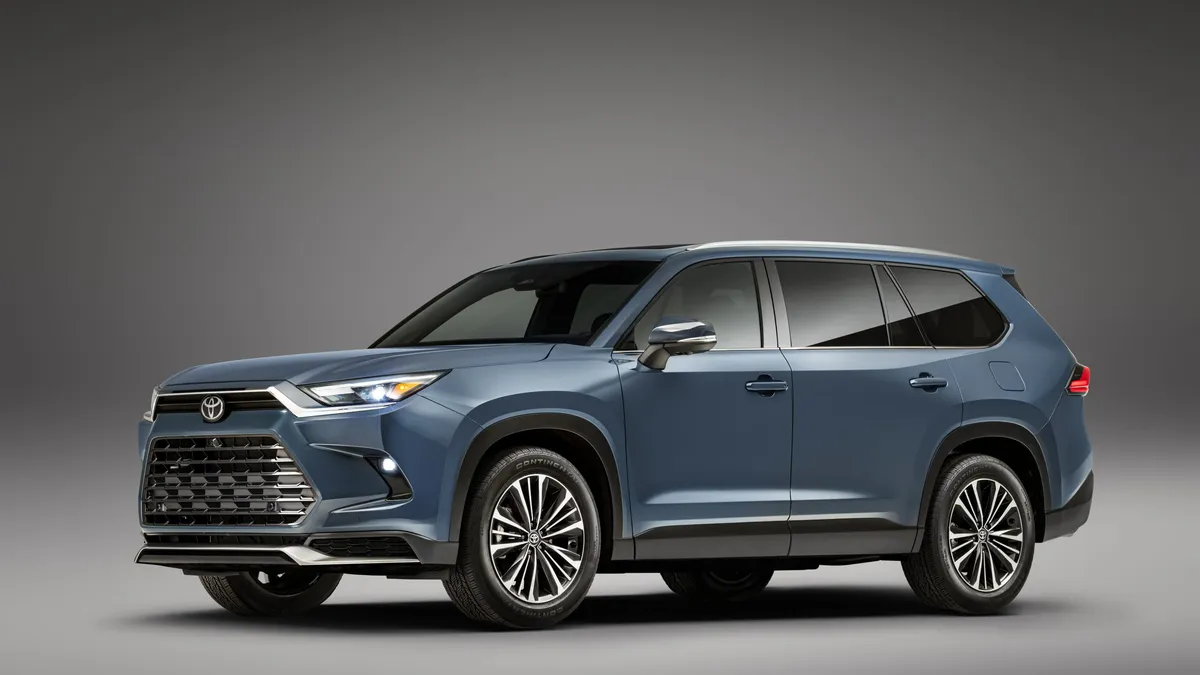
1. Toyota Highlander
The Toyota Highlander has been one of the top choices in the midsize SUV category for many years, thanks to its combination of reliability, comfort, and ample features. One feature that has garnered attention in the Highlander is its power liftgate, which comes standard in many of its trim levels.
On paper, it’s an excellent idea—a feature designed to make life easier for drivers juggling groceries, strollers, or anything else that needs to go in the rear. However, in practice, the Highlander’s liftgate is unreasonably slow, taking a full 8-12 seconds to fully open after the button is pressed.
While Toyota likely designed this slow speed to emphasize smooth operation and reduce wear on the motor, it can feel unnecessarily sluggish during day-to-day use.
When you’re standing in a parking lot, or when it’s raining and you’re trying to get things into your car quickly, the last thing you want is to wait for your liftgate to slowly make its ascent.
The whole process could be especially aggravating for families with children, where efficiency is key. A 10-second wait just for the liftgate to open means extra time spent standing still, often holding a baby, a bag, or a few too many items in your hands.
Another issue is the lack of manual override. Once you press the button to activate the power liftgate, it starts its slow progression without giving you the option to speed things up.
Even if you try pulling the liftgate manually after it has started opening, the system resists. Toyota designed it with a motor that actively resists any attempt to speed up the opening, meaning you have to wait until it finishes its full cycle.
It’s the kind of detail that can become frustrating for daily users, especially in situations where time is of the essence. While Toyota may have focused on a gentle, controlled operation, there’s no denying that a little more speed could elevate the experience and make the Highlander even more user-friendly.
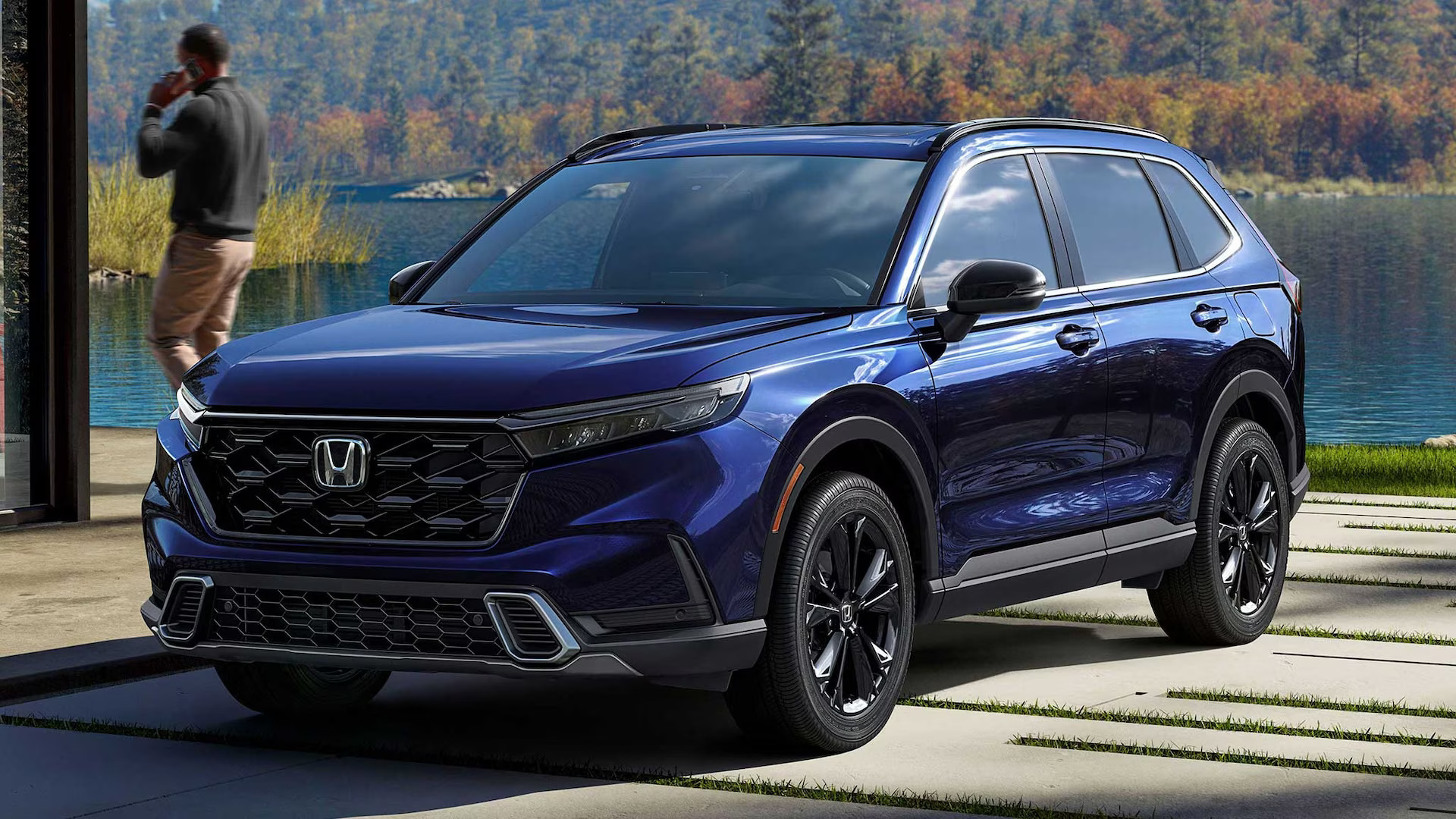
2. Honda CR-V
The Honda CR-V is known for its practical design, reliability, and stellar fuel economy. But the power liftgate in the CR-V, while a useful feature, often leaves drivers frustrated with its excessively slow operation. In particular, the liftgate takes a surprising amount of time—around 10–12 seconds—to fully open.
This seems like an eternity when you’re unloading groceries, luggage, or getting kids in and out of the car. Given that the CR-V is marketed as a compact SUV designed to make family life easier, the sluggish liftgate becomes an issue that detracts from its otherwise solid convenience features.
The CR-V’s liftgate is generally smooth and quiet, which might be part of the issue—its programming focuses on a gentle, refined operation, rather than prioritizing speed. Unfortunately, that smoothness often comes at the cost of efficiency. On a busy day, waiting for those 12 seconds can feel like a lot longer, especially when you’re juggling multiple items.
What makes this issue even worse is the delay when you press the button, during which there’s a noticeable lag before any movement begins at all. You press the button, wait, and then the liftgate starts slowly rising. This delay, coupled with the slow opening, results in a combination that just doesn’t keep up with the pace needed by users on the go.
Honda also doesn’t offer a way to adjust the speed of the liftgate, nor does it have a feature that allows you to override the system. This means you’re stuck waiting for the liftgate to complete its full cycle, even if you’re in a hurry or need to get something out of the trunk quickly.
There’s no way to skip ahead or even force the gate to open faster. In a vehicle that excels in areas like comfort, safety, and technology, the CR-V’s slow liftgate is a puzzling oversight that can become a minor but significant irritant for daily users.

3. Subaru Outback
The Subaru Outback has long been a go-to choice for those who appreciate a combination of rugged capability and family-friendly practicality. Known for its off-road prowess, standard all-wheel drive, and spacious interior, the Outback is designed to take you to places other vehicles simply can’t. However, the power liftgate in the Outback is a weak link in this otherwise capable vehicle, often frustrating owners with its slow and cumbersome operation.
The main issue lies in the fact that the power liftgate can take up to 12 seconds to fully open once the button is pressed. While this might seem like a trivial delay in the context of a full day’s driving, it can be incredibly frustrating when you’re trying to load the car in a hurry.
The Outback is built for outdoor adventurers, and for those heading to the mountains or the coast, a fast-opening liftgate would be a convenience, whether you’re throwing in camping gear or quickly grabbing something out of the trunk. Unfortunately, the Outback’s slow gate just doesn’t match that lifestyle. Instead of a quick and efficient operation, it feels like you’re stuck waiting for the liftgate to fully open, wasting precious time.
Adding to the frustration is the hands-free opening function, which adds even more time to the process. Once you wave your foot under the sensor to activate the liftgate, there’s often a slight hesitation before any movement begins.
This extra delay makes it even more of a chore to get things into or out of the Outback when you’re juggling gear or struggling to open the car in a crowded parking lot.
Subaru’s approach to power liftgate speed is clearly focused on safety and smooth operation, but it’s not a system that works well when you’re in a rush or when every second matters. The Outback’s design makes it a fantastic vehicle for adventure, but this slow liftgate leaves you wondering why it hasn’t been updated for a faster, more user-friendly experience.
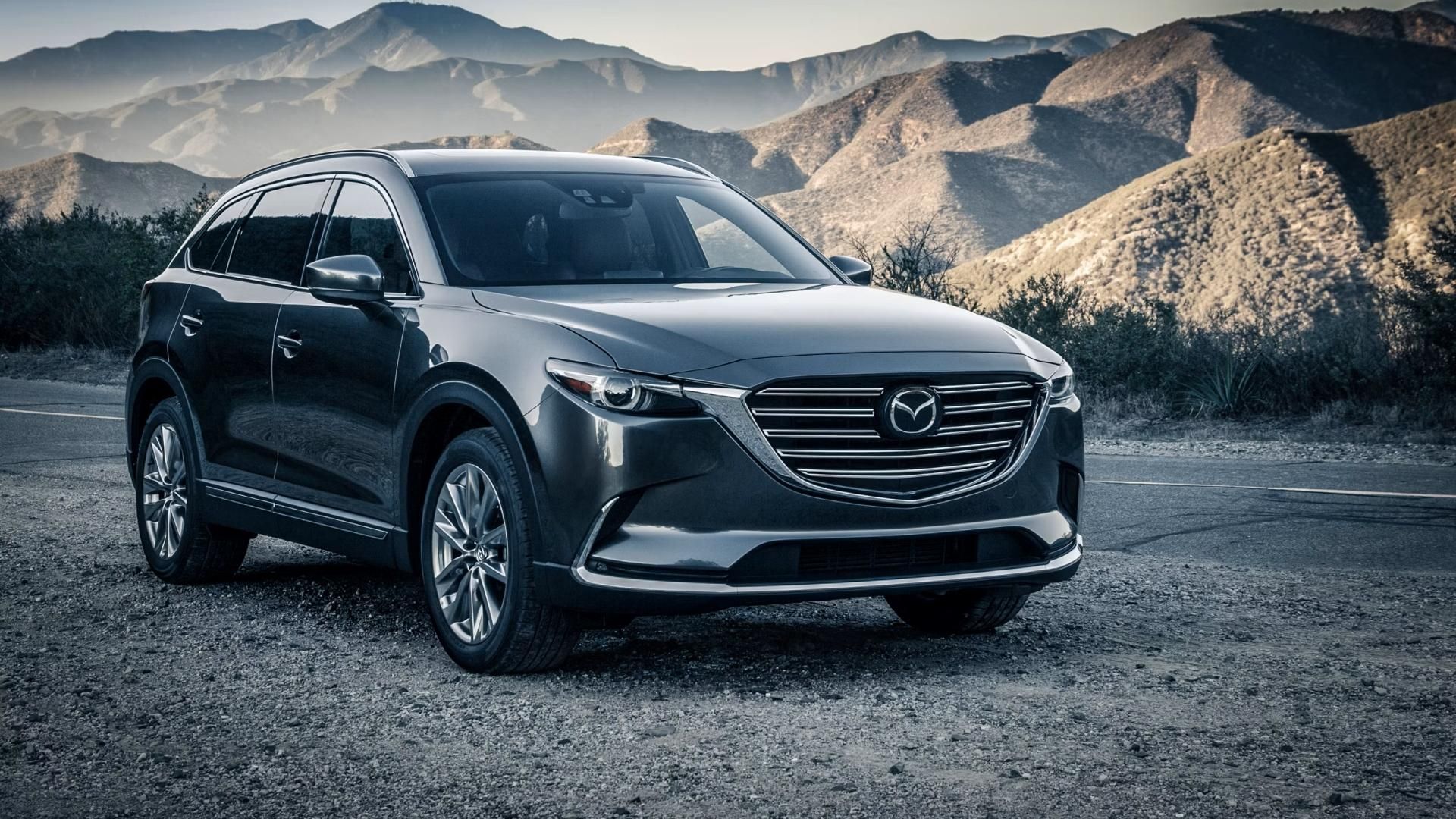
4. Mazda CX-9
The Mazda CX-9 is an SUV that punches above its weight in terms of luxury features, elegant styling, and an engaging driving experience.
As Mazda’s flagship SUV, it’s packed with high-end features like a refined interior, a powerful engine, and an upscale driving experience that competes with more premium brands. Unfortunately, one feature that doesn’t match up to the luxury level is the power liftgate, which operates at an alarmingly slow pace, frustrating many owners who expect efficiency.
At a glance, the power liftgate in the CX-9 is an impressive feature—it opens smoothly and quietly, without the jerks or loud noises some vehicles produce. However, it’s also painfully slow. When the button is pressed, it takes nearly 10 seconds to reach full height.
This slow motion becomes a notable inconvenience, especially when you’re loading or unloading the cargo area during busy days. Mazda likely prioritized a controlled and quiet opening for a more premium feel, but this results in a liftgate that feels sluggish and clunky compared to competitors in the same price range.
To make matters worse, the CX-9 doesn’t offer an option to adjust the speed of the liftgate. So, no matter how many times you use it, you’re stuck waiting for it to complete its full motion. If you try to manually assist in opening it, the motor doesn’t allow you to do so without stalling, which is especially frustrating in cases where you want to speed up the process.
The lack of customization or even an override option is a glaring flaw in a vehicle that otherwise excels in many areas. For a family vehicle that aims for a premium experience, the CX-9’s slow liftgate seems completely out of place.

5. Ford Escape
The Ford Escape has undergone a complete overhaul in recent years, and it’s now a solid contender in the compact SUV market. With a smooth ride, a stylish design, and a tech-savvy interior, the Escape offers something for just about every type of driver.
However, one feature that needs serious improvement is the power liftgate, which opens and closes at a disappointingly slow rate. While it’s still a helpful feature for users with their hands full, the lag in operation detracts from the otherwise convenient functionality of the vehicle.
The most frustrating aspect is that it takes almost 10–12 seconds to open completely after pressing the button or activating the sensor. This delay, while seemingly insignificant, becomes incredibly noticeable when you’re unloading the car, running errands, or simply in a rush to get in and out of the car.
With a small footprint and design that should make it agile and quick, the Escape’s slow liftgate is somewhat out of character. Ford’s design choices seem to prioritize a smooth and gentle operation, but this sacrifices speed and efficiency, both of which are crucial for daily drivers who need fast access to the cargo area.
On top of the slow opening, Ford doesn’t provide an option to manually speed up the gate or override the motor’s control. So, once the liftgate begins its slow motion, you’re stuck waiting for it to finish. Even the foot-activated opening system takes a few moments to respond, adding to the frustration.
Despite the Escape being a great all-around vehicle, this slow liftgate certainly feels like a design oversight, especially when you consider the speedier systems found in competitors within the same class. A faster power liftgate could make the Escape an even more practical vehicle, and a more seamless option for daily commuters and families.
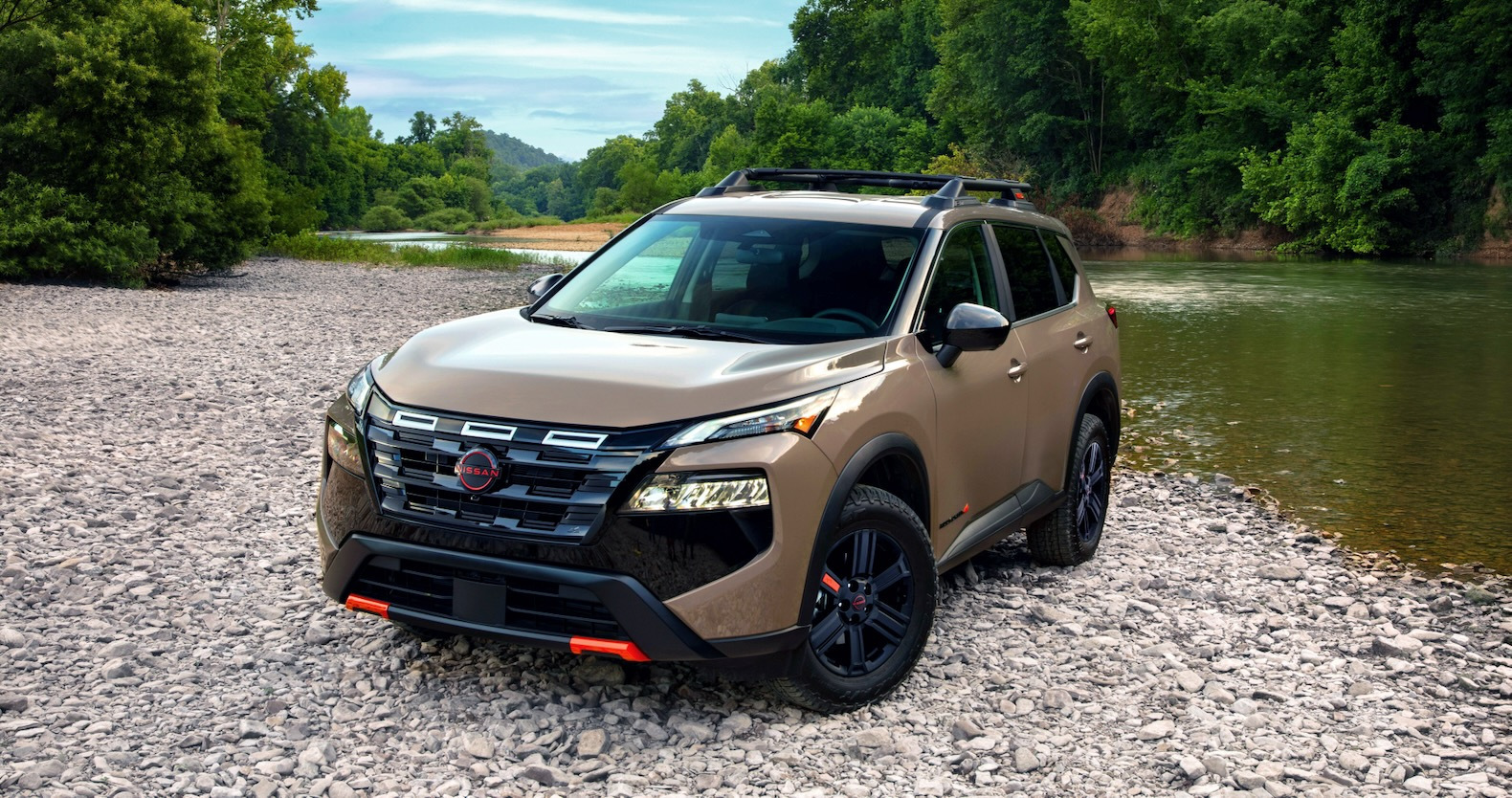
6. Nissan Rogue
The Nissan Rogue is a compact crossover SUV that has gained popularity for its comfort, practicality, and tech-forward design. It’s a great option for families and urban dwellers who need something small enough to maneuver easily but spacious enough to carry their gear.
However, one feature that causes significant frustration for owners is the power liftgate, which is slower than most of its competitors, making it more of a hassle than a convenience. With a full 10 seconds required to open, this delay can feel like an eternity when you’re loading groceries, stowing luggage, or preparing for a road trip.
The Rogue’s liftgate operates with the intent of being smooth and quiet, but this overly cautious opening is a point of contention for many users. When you press the button, there’s often an additional pause before the gate even begins to rise, as if the system is double-checking whether it should open.
This pause adds a few extra seconds to the process, compounding the frustration. And while the Rogue’s liftgate is gentle and safe, it doesn’t feel particularly efficient, especially when you’re in a hurry or need to load things quickly.
What makes this issue even more frustrating is that Nissan doesn’t offer a way to speed up the process. There’s no customization option for the liftgate speed, and even manual intervention to speed up the opening doesn’t work. Attempting to manually assist the gate causes it to stall, and the motor resists being pushed.
Given how many people use their Rogue for busy, everyday activities, this slow liftgate is a persistent problem. A faster liftgate would improve the usability of the vehicle and bring it up to the level of its competitors, making it a more practical choice for families and everyday commuters.

7. Jeep Grand Cherokee
The Jeep Grand Cherokee is an iconic midsize SUV that balances rugged off-road capabilities with everyday practicality. Its blend of power, design, and luxury features has made it a top choice for those who need a versatile vehicle.
But despite its many strengths, the power liftgate in the Grand Cherokee often leaves much to be desired. Sluggish and unresponsive, the liftgate is one of the most commonly cited drawbacks in the SUV, with a delay of about 10–12 seconds before it opens completely.
The issue lies in the slow activation of the liftgate. Unlike other vehicles where the gate starts opening almost immediately after pressing the button, the Grand Cherokee requires a noticeable pause before any motion begins.
This delay can feel incredibly frustrating when you’re in a hurry, whether you’re trying to get groceries into the car or quickly loading camping gear. The vehicle’s design seems to prioritize a smooth and controlled motion, but this often comes at the expense of speed, making it feel like the SUV is performing in slow motion when compared to similar models.
Adding to the irritation is the lack of speed customization or manual override. If you try to help the liftgate open manually during the operation, the motor doesn’t allow it, leaving you with no choice but to wait for the gate to complete its opening process.
Given the Grand Cherokee’s off-road focus, the slow liftgate feels especially out of place for an SUV meant to be versatile and tough.
In situations where you’re dealing with muddy boots, heavy bags, or need to access the trunk quickly, the sluggishness of the gate can be a real inconvenience. While the Grand Cherokee excels in other areas, the power liftgate could definitely use a redesign to match the SUV’s performance.
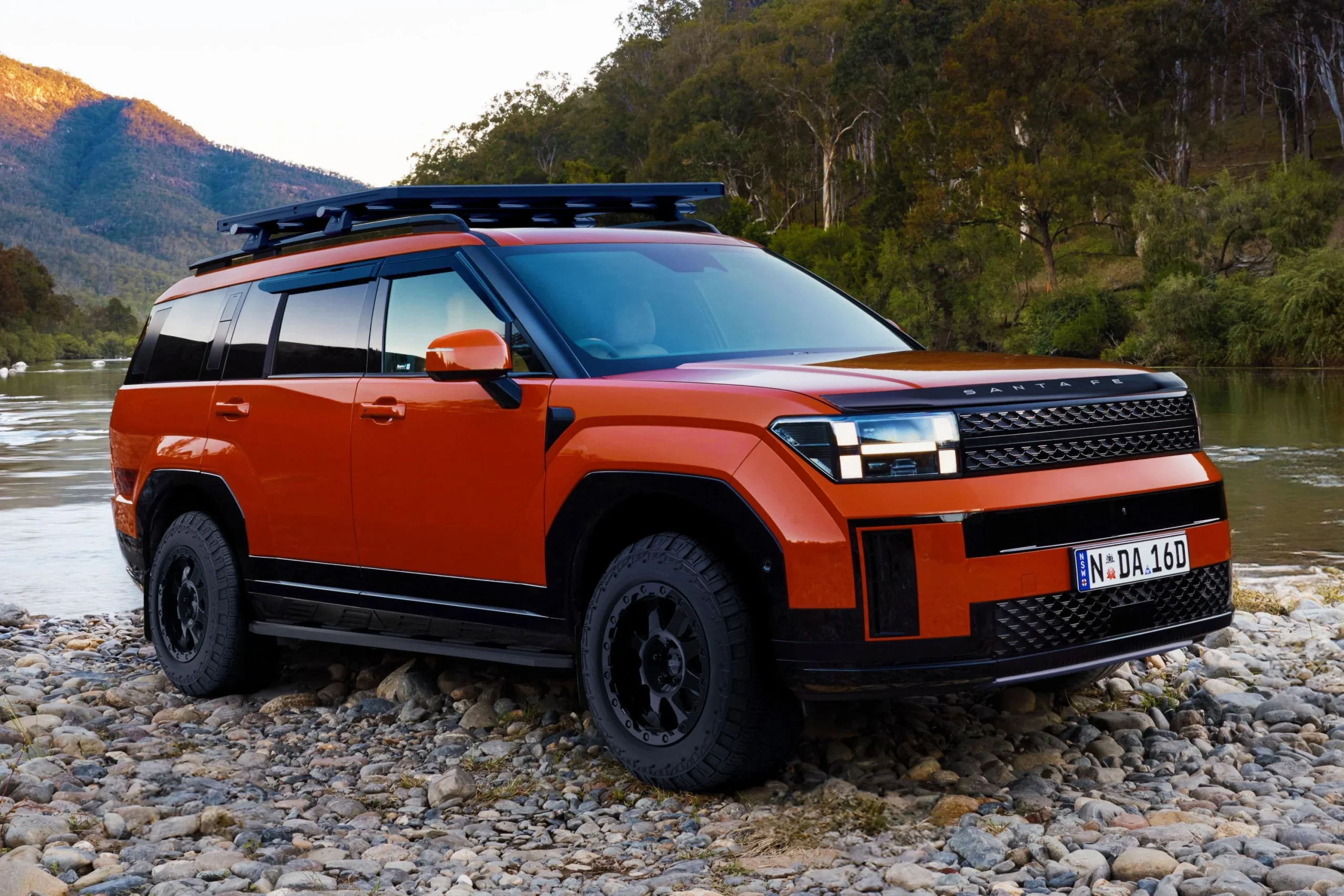
8. Hyundai Santa Fe
The Hyundai Santa Fe has long been a favorite in the midsize SUV market, offering a comfortable interior, impressive tech, and great value for the price. It’s a practical choice for families and individuals alike, especially with features such as a power liftgate. However, the Santa Fe’s liftgate is notably slow compared to its peers. Taking a full 10-12 seconds to open, it becomes an annoying feature when you’re juggling multiple items or trying to load something in a hurry.
Hyundai’s design philosophy for the Santa Fe seems to prioritize smoothness and elegance, but in this case, that results in an excessively delayed liftgate. Unlike many SUVs where the power liftgate has a brisk, responsive speed, the Santa Fe’s liftgate takes its time, creeping open with a noticeable pause before beginning to rise.
While it’s likely intended to prevent abrupt movements or any jerking that could harm the motor, this cautious approach is at odds with the fast-paced needs of drivers, particularly those with busy lifestyles who don’t have time to wait for a slow-moving tailgate.
What’s particularly frustrating is that, like many other vehicles on this list, the Santa Fe lacks a way to adjust the speed or override the liftgate’s pace. So even if you’re familiar with the car and know how to handle it, you’re still stuck with the sluggish pace.
This is a feature that should have been improved or fine-tuned in recent models, especially for a vehicle aimed at practicality and ease of use. The Santa Fe would be much more efficient with a quicker liftgate that reflects the vehicle’s convenient nature, particularly for parents or individuals who frequently need to load and unload.
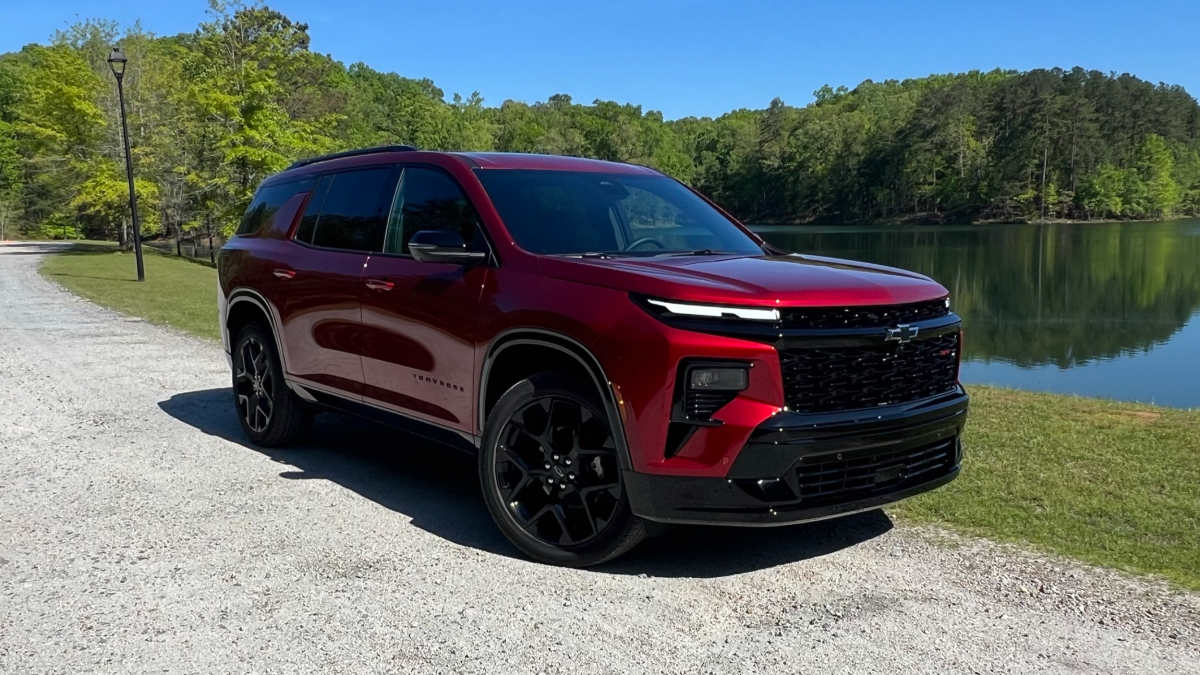
9. Chevrolet Traverse
The Chevrolet Traverse is one of the best-selling three-row SUVs, known for its spacious interior, generous cargo capacity, and impressive performance. It’s a favorite for large families or anyone who needs ample room for both passengers and gear.
Yet, its power liftgate remains one of its weaker points, operating at a disappointingly slow pace. The liftgate on the Traverse takes up to 12 seconds to open completely, which feels like an eternity when you’re loading or unloading multiple items.
Chevrolet has engineered the Traverse with a smooth, controlled liftgate operation, but the downside is its lack of urgency.
If you’re in a hurry, the delay becomes more than just an inconvenience—it can significantly slow you down. When your hands are full of gear or groceries, waiting for the liftgate to open becomes an unnecessarily prolonged process.
The Traverse’s large size and heavy build mean that the motor has to do more work, but that doesn’t excuse the sluggish pace. Given how many people rely on the Traverse for family trips or hauling large amounts of gear, a faster liftgate is practically a necessity.
The lack of an adjustable speed or manual override makes the issue even more pronounced. You can’t speed up the process or force the gate open manually if you need it to move faster. This means every time you use the power liftgate, you’re subject to the same slow sequence.
With the Traverse’s family-oriented design, it’s perplexing that the liftgate’s speed was not given more attention. As it stands, the Traverse is a great vehicle in almost every way, but its slow power liftgate can detract from its otherwise excellent functionality.

10. Ford F-150
The Ford F-150, a longstanding leader in the full-size pickup truck segment, is revered for its strength, performance, and range of features. The truck offers a variety of technological upgrades, including a power tailgate that provides great convenience when loading and unloading cargo.
However, the F-150’s power tailgate operates at a surprisingly slow pace, taking a full 8–10 seconds to open, which is particularly noticeable in comparison to the truck’s performance.
Even though Ford designed the power tailgate to be smooth and precise, the slow speed becomes frustrating in practical, real-world situations. Whether you’re unloading tools, sports equipment, or furniture, the slow power tailgate adds unnecessary time to the process.
Unlike other vehicles where you can press the button, quickly grab what you need, and be on your way, the F-150’s liftgate feels like it’s dragging its feet. This slow pace stands in stark contrast to the truck’s reputation for being fast, tough, and efficient, making it an unexpected frustration for drivers accustomed to quicker movements.
Furthermore, Ford doesn’t offer the option to adjust the speed of the tailgate’s operation, nor does it allow for manual override. The system is programmed to move at a set pace, and any attempts to speed it up manually are thwarted by the motor’s resistance.
For a truck that is often used for heavy-duty tasks, waiting for the tailgate to slowly open or close can be frustrating. A simple speed adjustment or quicker operation would make the F-150’s power tailgate a more functional feature, better aligned with the truck’s rugged capabilities and efficiency.
Also Read: 5 Cars With the Best Factory Paint and 5 That Peel Fast
In today’s fast-paced world, efficiency and convenience are more than just luxuries; they are necessities that help us navigate our busy lives. Power liftgates, once considered a premium feature, have now become an essential part of many vehicles, offering drivers a hands-free, effortless way to access the trunk or cargo area.
However, as we’ve seen in the cases of the Toyota Highlander, Honda CR-V, and others, there’s a significant gap between the intended convenience of a power liftgate and its actual performance in certain models.
The slow, sluggish operation of these gates, often taking upwards of 10 seconds to open fully, highlights a key issue that automakers seem to overlook: speed matters.
For drivers, especially those juggling groceries, kids, or sports gear, every second counts. The slow liftgate not only wastes valuable time but also becomes a point of frustration when the car is supposed to make life easier.
Whether it’s the hesitation before the liftgate even begins its movement, or the lack of any option to override or speed up the process, the lack of consideration for real-world scenarios is evident.
When you’re in a rush or trying to avoid getting drenched in the rain, waiting for a liftgate to slowly rise can feel like a poor design choice.
This is particularly true in vehicles like the Jeep Grand Cherokee, Hyundai Santa Fe, and Ford F-150, where the slow power liftgate stands in stark contrast to the speed and performance of the rest of the vehicle.
What makes this issue even more frustrating is the fact that these are often family-oriented vehicles or workhorses designed to haul heavy loads or take families on weekend adventures. In these instances, a quick-access feature like the power liftgate should be a true convenience.
But when that feature becomes a bottleneck in the user experience, it detracts from the appeal of the vehicle. It’s not just about the mechanical speed; it’s about delivering a holistic user experience where every element works seamlessly together to make the driving experience as smooth and stress-free as possible.
The absence of an option to customize the speed or manually override the motor adds insult to injury. Drivers should not be at the mercy of a system that fails to adapt to their needs, especially when other vehicles in the same class offer more responsive liftgate systems.
In an era where consumers demand convenience and practicality, automakers need to step up their game. Power liftgates should enhance the experience, not hinder it. A faster, more responsive liftgate could make a world of difference for those who rely on their vehicle for daily tasks or long-haul trips.
As the automotive industry continues to evolve, it’s clear that technology should complement our fast-moving lives, not slow them down. Manufacturers have the opportunity to listen to their customers and enhance these small but impactful details in their vehicles.
After all, the difference between a liftgate that opens slowly and one that opens quickly could be the difference between arriving on time and feeling frustrated by a preventable delay.
As we continue to push for efficiency, comfort, and ease in all aspects of our daily routines, automakers would be wise to recognize that speed, when it comes to features like the power liftgate, is no longer a luxury—it’s a must-have.

